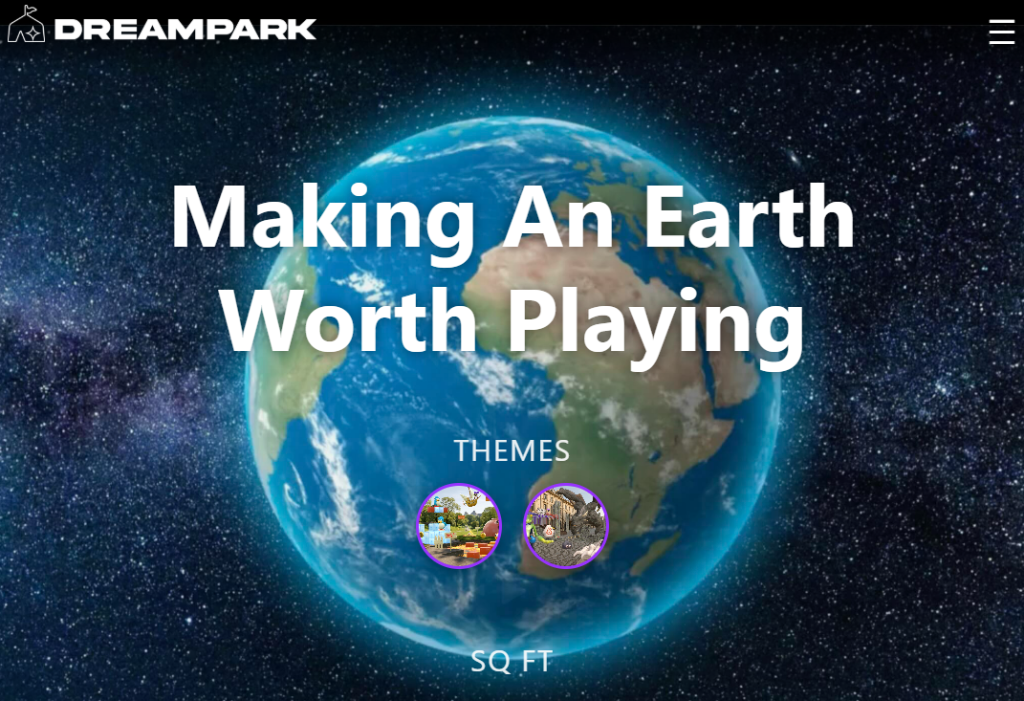Dreampark Immersive Raises $1.1M to Redefine Real-World Games That Heal the Planet
July 7, 2025
byFenoms Start-Ups

Dreampark Immersive, a startup blending immersive entertainment, climate innovation, and experiential storytelling, has raised $1.1 million in seed funding to launch a new genre of “playable futures” - real-world, interactive parks where sustainability and storytelling converge.
The round was led by Long Journey and Founders Inc, two firms known for backing visionary cultural-tech hybrids. This funding will help Dreampark scale development, expand their creative teams, and prototype immersive parks designed to turn environmental awareness into tangible action.
Founded by Brent Bushnell, Aidan Wolf, and Kevin Habich, Dreampark is not building theme parks in the traditional sense. Instead, it's creating real-world immersive experiences that use storytelling and interactivity to shift behavior and inspire ecological stewardship.
What Dreampark Immersive Offers
Dreampark parks are narrative-driven physical environments that combine climate themes with interactive storytelling. Their offerings are designed to create emotional connection, community collaboration, and a sense of agency.
Key features include:
- Story-based game environments, where players’ choices shape outcomes
- Multisensory installations, grounded in themes like biodiversity, regeneration, and circular economies
- Climate-positive infrastructure, including modular, low-waste, carbon-minimal designs
- Immersive narrative platforms, where people act out better futures instead of just imagining them
The goal is not escape, but engagement. Dreampark doesn't ask players to forget the world - they invite them to reimagine it. The experiences are crafted to spark transformation, where people leave not only entertained but activated.
The Strategic Differentiator: Story as the Product
The defining move Dreampark made wasn’t just technical - it was messaging clarity. They didn’t pitch sensors or software. They pitched: “We turn climate anxiety into action - through play.”
Here’s what founders should steal: in culture-heavy or values-driven markets, the story is the product. If your tech doesn’t point to a human benefit or emotional shift, it’s a tool in search of context. Dreampark positioned narrative as an intervention, not decoration. That reframes the user from a passive observer to the hero of a world-building mission.
Too often, climate tech or immersive experiences get stuck in novelty loops. Dreampark avoided this by anchoring in behavioral impact - “healing the planet” isn’t the backdrop; it’s the purpose. This subtle shift is what unlocks buy-in from both funders and audiences.
Market Outlook: Where Immersive and Regenerative Innovation Converge
The immersive entertainment market is surging. Global forecasts project it will surpass $70 billion by 2030, spanning XR, gamified learning, experiential museums, and more. Simultaneously, the climate tech sector drew over $70 billion in investment in 2023 alone, as demand for sustainable experiences and decarbonization solutions explodes.
Meanwhile:
- Over 60% of Gen Z factor sustainability into leisure and purchasing decisions
- Immersive learning experiences tied to values see repeat engagement rates 2–3x higher
- A growing number of municipalities are funding climate-conscious public activation spaces
By operating at the intersection of these trends, Dreampark sits in a rare position: it’s both cultural infrastructure and climate intervention.
Who It’s For
Dreampark’s model is modular and scalable, designed to embed into both urban and rural landscapes. Key target groups include:
- Families and conscious consumers looking for meaningful recreation
- Eco-tourists attracted to regenerative travel
- City governments and planners wanting to repurpose space for sustainability engagement
- Educators and nonprofits, aiming to gamify climate literacy
- Corporate sponsors seeking immersive ways to showcase ESG impact
Because the experiences are built around physical storytelling zones, they can adapt to varied formats - from a popup in a reclaimed warehouse to a permanent regional landmark. And since every location operates from a shared platform, impact measurement and content can scale with community needs.
What’s Next for Dreampark
Following this raise, the startup will focus on:
- Launching pilot parks in cities with strong sustainability and arts networks
- Hiring creatives, worldbuilders, and engineers to expand the experience platform
- Developing proprietary storytelling engines powered by game design and behavioral science
- Forging partnerships with schools, cities, and climate orgs for co-creation
- Building data tools to measure visitor impact, from environmental behavior shifts to learning outcomes
They’re also exploring collaborations with film studios and IP holders to license worlds that combine fiction with ecological learning - effectively letting visitors “walk inside” regenerative futures.
The Long-Term Vision: Regeneration as Recreation
Dreampark Immersive ultimately wants to become the first real-world game park network designed for planetary restoration. By reframing play as a tool for behavior change, and designing worlds that reflect regenerative principles, the company is rewriting what it means to build infrastructure for the 21st century.
Entertainment doesn’t need to be an escape from the world. It can be the training ground for remaking it.
And in a time when the planet feels increasingly uncertain, Dreampark believes the strongest infrastructure we can build is imagination, shared purpose, and participatory action.
Because the stories that shape the future shouldn’t just be streamed. They should be lived.









